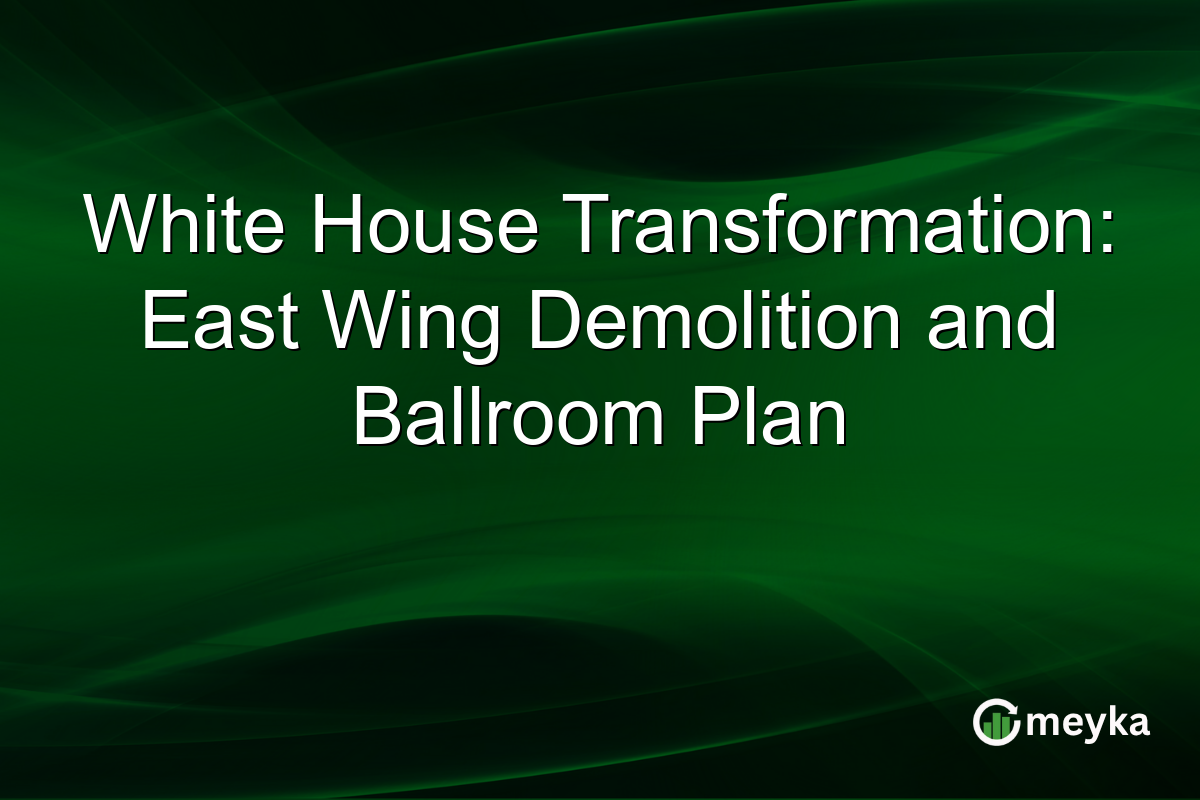White House Transformation: East Wing Demolition and Ballroom Plan
The White House East Wing is about to undergo a major transformation, signaling a historic shift in its structure. A $250 million ballroom project, backed by former President Donald Trump and private donors, is at the center of this change. While the plan promises a new level of opulence and utility, it has sparked intense debates about transparency and historical preservation.
The White House East Wing Demolition
The proposed demolition of the White House East Wing has surprised many. Official statements from the administration emphasize modernization and increased capacity as primary goals. The existing structure, historically significant, will make way for a new ballroom designed to host large state events. Critics, however, express concern over the loss of historical architecture and the transparency of funding. For more about these concerns, see The Guardian coverage. This highlights a complex balancing act between progress and preservation.
Trump Ballroom Project: Funding and Public Debate
Donald Trump’s involvement in the project, along with private donors, has added a layer of complexity. The $250 million estimated cost raises questions about transparency and accountability. While the White House assures adherence to legal requirements, public skepticism persists. The historical significance of government buildings intensifies this scrutiny, reflecting broader tensions over private influence in public spaces. Concerns extend to the architectural integrity and the historic nature of the premises.
Historical Preservation Concerns
The White House’s East Wing has stood as a part of America’s historical backdrop for years. Preservationists argue that transformations threaten this legacy. The National Historical Preservation Act mandates certain protections, sparking legal debates about the demolition’s compliance. However, proponents argue that certain historical elements will be preserved and integrated into the new ballroom design. This shows the ongoing struggle between development and conservation.
Final Thoughts
The proposed White House East Wing demolition and ballroom addition is more than a structural change; it’s a reflection of modern political and cultural dynamics. While the project is ambitious, aiming to enhance functionality and prestige, it also challenges historical preservation norms and transparency standards. These developments underscore a critical conversation about modernizing iconic landmarks while respecting their historical significance. As the project moves forward, the balance between new utility and preserving tradition will remain a central theme.
FAQs
The project involves demolishing the current East Wing to construct a new $250 million ballroom. Former President Donald Trump and private donors fund it. The ballroom aims to increase capacity for state events while modernizing the facility.
The demolition and new construction are funded by Donald Trump and private donors. This has raised questions about transparency and how public and private interests intersect in such iconic renovations.
Preservationists are concerned about losing the historical architecture of the White House’s East Wing. The National Historical Preservation Act’s mandates could be a focal point for legal discussions, aiming to balance modernization with preserving history.
Disclaimer:
This is for information only, not financial advice. Always do your research.






